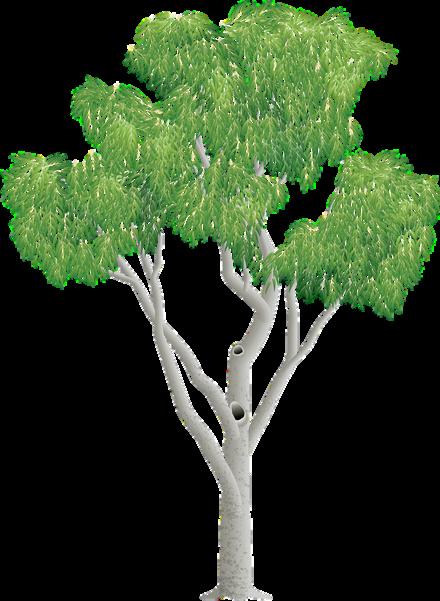
10 minute read
GULF SAVANNAH ROUND UP

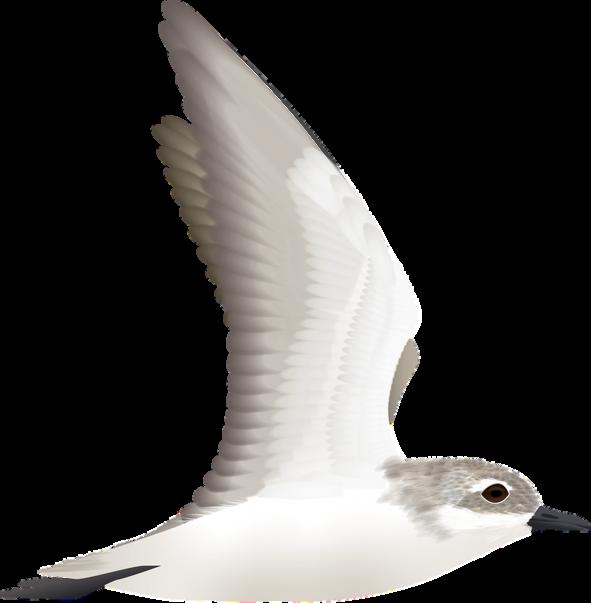
Advertisement

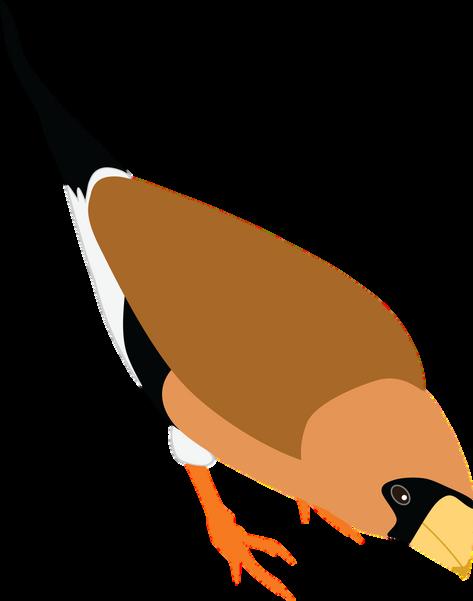
Newcrossingformitchell
Carpentaria Shire Council will receive over $22 million to repair the vital Mitchell River Crossing along Dunbar Koolatah Road, thanks to joint funding from the Albanese and Palaszczuk Governments through the Disaster Recovery Funding Arrangements (DRFA) The route is crucial for livestock, freight, tourist traffic and community connectivity to north-west Queensland
Bumperfishingseasoninthegulf
TheGulf of Carpentaria has seen its 'best fishing in years' as cherabin and barramundi take over local rivers after record floods, making the Gulf a must-see destination for tourists. Read more: ABC North West Qld, 6 May 2023

Rotaryfielddays
It was another massive year for the Rotary FNQ Field Days at the Mareeba Rodeo Grounds! 500 sites, 450 exhibitors and hundreds of visitors! We're already looking forward to the next event in 2025.
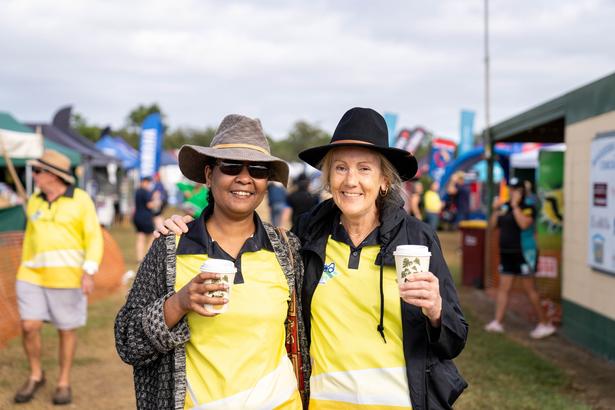
waste to help farmer s improve their soil

Gulf Savannah NRM recently caught up with Jess Uhlig from Green Food Australia
. Originally from Adelaide, Jess has been a Far North local for the last 16 years. Jess shared her story, and how she ended up partnering with Gulf Savannah NRM on a HumiSoil® trial on a farm in Mutchilba.
Jess Uhlig's background is in tourism and hospitality, and it was in these industries that she was exposed to a lot of food waste and her quest to combat that waste led her to launch her business Green Food Australia late in 2020

“We are so blasé about what it’s taken to produce that food and we discard it so carelessly It really is quite confronting when you see so much waste going to landfill the scale of it is just mind boggling Up here in North Queensland we have really limited recycling opportunities,” Jess says
The more Jess learnt about food waste and its impact on the environment, the more she wanted to be part of a solution
I think everyone needs to be more aware of where their food has come from, and the work and resources that’ve gone into producing it
Jess’ research led her to discover some technology which would enable the conversion of both food material and organic vegetative waste into soil enhancers and fertilisers, and she went from there. We asked her about the story behind establishing Green Food Australia.
“Like many people during lockdowns in 2020, I had the time to stop and read,” she says. “I learnt about this company called VRM Biologik based in Townsville, who have pioneered technology converting food waste to soil enhancers. They have 15–20 years’ worth of experience doing this, starting in Australia but our country wasn’t quite ready for biological solutions… yet! So they went offshore and did most of their research and development in South East Asia and China, and then started working in the States and across Europe. Then the pandemic brought them back to Australia.”
Jess decided she had to take the leap and give the business a go, given the potential this solution had to tackle environmental and economic problems
“The price of fertiliser and the cost of food and food security are all just compounding There’s got to be a way farming can be done smarter, not harder ”
It was then that Jess set up Green Food Australia, and started spending more time on the Tablelands talking to different growers and farmers to see what was going on
“Last season, avocado trees were getting bulldozed and burnt, so there goes all that money those growers have pumped into them: fertilisers, water, all just going up in smoke and contributing to greenhouse gases,” Jess laments. “I started to wonder if they were aware they could return that to the soil and get back all those nutrients. They might have lost their trees, but they don’t have to lose the nutrients they’ve put into them.”
Green Food Australia partner with and use the technologies pioneered by VRM Biologik, as this eliminates the need to manufacture the enhancers themselves. VRM Biologik have developed a process called Groundswell®.
“There are two elements to what we produce,” Jess explains “One is a liquid bio-fertiliser which is a soil catalyst, which we produce from food waste then what I have left over is a pulp or slurry that goes into large piles on farms The second piece of technology we use is put in with this organic material in a pile, in a process like ground composting It causes vegetative waste to be reprocessed at a really accelerated rate At the end of the process, you get HumiSoil®, which is basically topsoil ”
Through talking to Gulf Savannah NRM’s Sarah Stevens, Jess decided to start up a Groundswell® project out on a lemon myrtle farm at Mutchilba where a pilot has now been established using a pile of organic material and accelerator biofertilizer
“Most of the material for any grower to produce HumiSoil® is already what is on their farm,” Jess points out “For example, our lemon myrtle grower in Mutchilba had 75 rotting haybales that couldn’t be used anymore. He had chicken manure, rotten lychees and limes. Some of his neighbours had an oversupply of fruit that couldn't go to market. He got all of that and put it into his pile.”
Jess points out that farmers have got the machinery they need already, as well as the food and organic waste ready to go. Many farmers are looking for alternatives, given the continuing price hikes of fertilisers and soil amendments. With Green Food Australia, Jess wants to help them use their own waste and convert it into something they can put straight back into their soil in a safe manner.
Jess also delivers whatever waste she can, to add to the pile. “The piles end up containing dead animals, fish frames, coffee residue, coffee berries, newspaper as well as food waste… all sorts of stuff. The beauty of the pile is that it’s not as sensitive as conventional composting where you must make sure you have to get your browns and green ratio right,” Jess adds.
Anything that breaks down organically in the everyday environment can go the pile —you can put cotton t-shirts or whatever in there and it will break it down.
To be clear, this is not compost. Composting is a decomposition process which disassembles organic material. That disassembled material releases energy, gases, and water, and you end up with a lot less volume than what you started with.
“When you do the Groundswell process to produce HumiSoil® there is a decomposition element there, but through this technology the bacteria in the pile starts to rebuild that organic matter,” Jess tells us. “When you do a Groundswell® pile, you might put in 75 tonnes of food waste, and you are left with 75 tonnes of HumiSoil® at the end of 6 months.”
“The carbon and water that is usually released through composting remains stored with the pile What that is doing is rapidly rebuilding soil This is what happens naturally, but if it was going to happen on a rainforest floor it would take 50 years to get to that level of soil organic matter,” Jess says

We’re doing it within 6 months it’s an accelerated version of what already happens naturally in our environment.
“We’re building humic acid, to convert any other soil medium that touches into topsoil,” Jess says excitedly. “You can apply this quite lightly, you don’t need a lot to get the reaction started; it is accelerated biology that activates bacterial photosynthesis This can happen 24hrs a day because it doesn’t need sunlight ”
Jess tells us that while every farm and pile are different, application rates are between 4 and 8 tonnes per hectare depending on soil quality in the first year This amount is then halved in subsequent years
So, what is the future potential of the product, and Jess’ vision for Green Food Australia? Simple she wants to see all growers being able to use the food and organic waste from their land to improve their crops and pastures into the future, at a really low cost
“I hope growers will continue to recycle the nutrients on their farm instead of going down the path of potentially harmful and expensive inputs,” Jess says “There is one guy, Duncan Sturrock, who has a cattle property down in South-West

Queensland that’s been in the family for 90 years or so They’ve grown different crops, they’ve run cattle, they’ve done heaps of different things over the years, but by not knowing and trying to get ahead over the years they’d absolutely ruined their land ”
Then the property switched to producing HumiSoil® out of their destroyed animals “They’ve been spreading HumiSoil® on their property now from about 2011,” Jess tells us “During the drought, all his neighbours had to buy in food for their cattle and they had to get rid of cattle At the same time, Duncan was growing native grasses that he’d not seen for over sixty years ”
This is the future Jess is excited to see unfold
GETINVOLVED
Don't miss the next HumiSoilFieldDay in Dimbulah on 19 June. Scan the QR code to register for free!


Janus Boonzaaier has taken on quite a challenge. He's planted 6,000 grapefruit trees west of Dimbulah. Despite what could only be generously described as “challenging” soils, his trees are looking spectacular 18 months in and heading for their first commercial crop, including an exciting new grapefruit variety, Sweet Sunrise. We caught up with Janus and his offsider Jacob on a sunny autumn day to chat about his efforts.
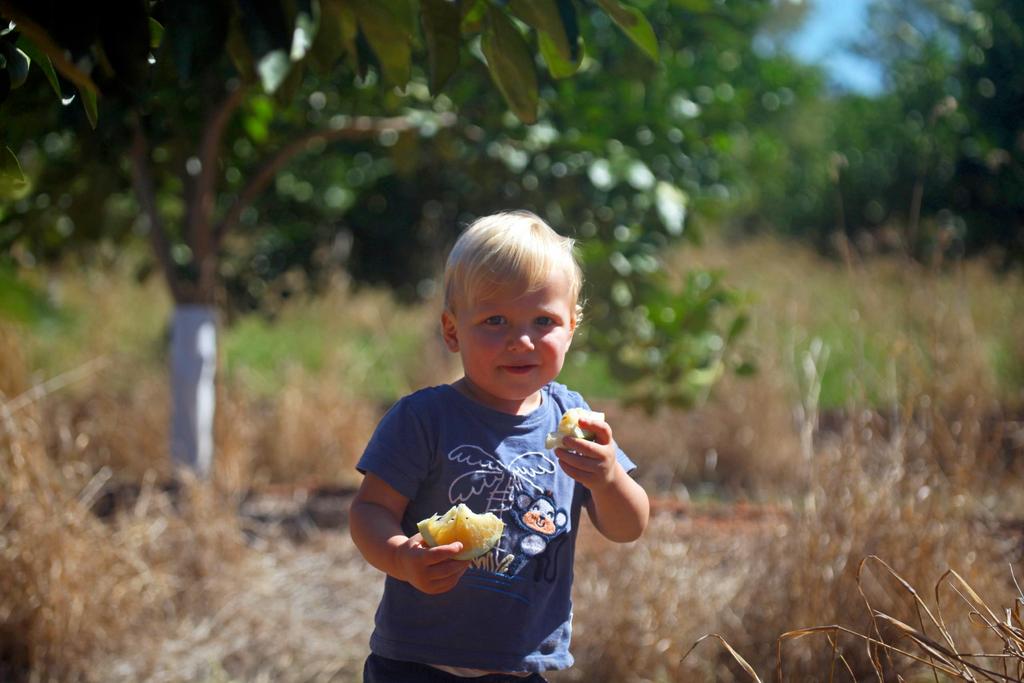
"These soils are tough They have a Cation Exchange Capacity of just 1 4, a pH of 3 8 and are almost exclusively sandy loams that won’t hold much water," Janus says, as we stand among his young trees "This farm was used for a long time for tobacco, right up to the 1990s, and that can be tough on soils that weren’t great to start with "
We knew we had to invest the time to improve the soils from the outset, and then manage them carefully to get the best results
You wouldn’t know it looking at the trees. At just a bit over 18 months old, they're where you’d expect a 2–2 ½ year tree to be at.
"We deep ripped to prepare the site, adding lime and gypsum to improve the pH, and chicken manure to get the organics up, before we planted our trees We use drip irrigation and carefully mix in our fertiliser with every daily dose," Janus explains "That dosing is very carefully controlled to ensure we keep the EC (electrical conductivity) no higher than 2 4mS/cm Too high and it burns the fine roots on the trees and sets back their nutrient uptake, too low and the trees go into a survival mode You have to get it just right for optimal growth, and that needs careful, daily attention "
Janus uses multiple automated probes across his 18ha orchard to monitor soil pH, EC and temperature as well as an on-site automated weather station to monitor local conditions He uses an irrigation system with controlled dosing meters to ensure the exact fertiliser ratio, and then field tests regularly to check his trees are getting just what he expects
“Twice per year, we also dose through the irrigation system with bacillus and tricho," Janus tells us "These beneficial soil bacteria greatly assist the nutrient uptake of the trees The drip irrigation and fertiliser system reduces water use (over traditional microsprays) by 40%, reduces fertiliser use by 40% and improves fruit pack-out by 10% Inputs down, quality product up it’s a win-win for us ”
Janus, under the careful eye of his farm offsider and fruit quality control consultant Jacob (above), has cut back on irrigation to his trees now, deliberately stressing the plants “This brings on flower set so we can control when we get fruit We are targeting a very specific six-week window that we see as a gap in the market for our fruit, either into the domestic market or internationally ”
Janus grows Ruby Red Grapefruit and a new white-fleshed variety, Sweet Sunrise. It’s a new grapefruit for Australia, and he's one of only a couple of growers currently producing this fruit. It’s unlike the typically astringent yellow-fleshed grapefruit we might know that needs a good dose of sugar to make palatable without making your eyes flicker. Delicious, light flavoured and sweet, the fruit will surely be a hit in the market.
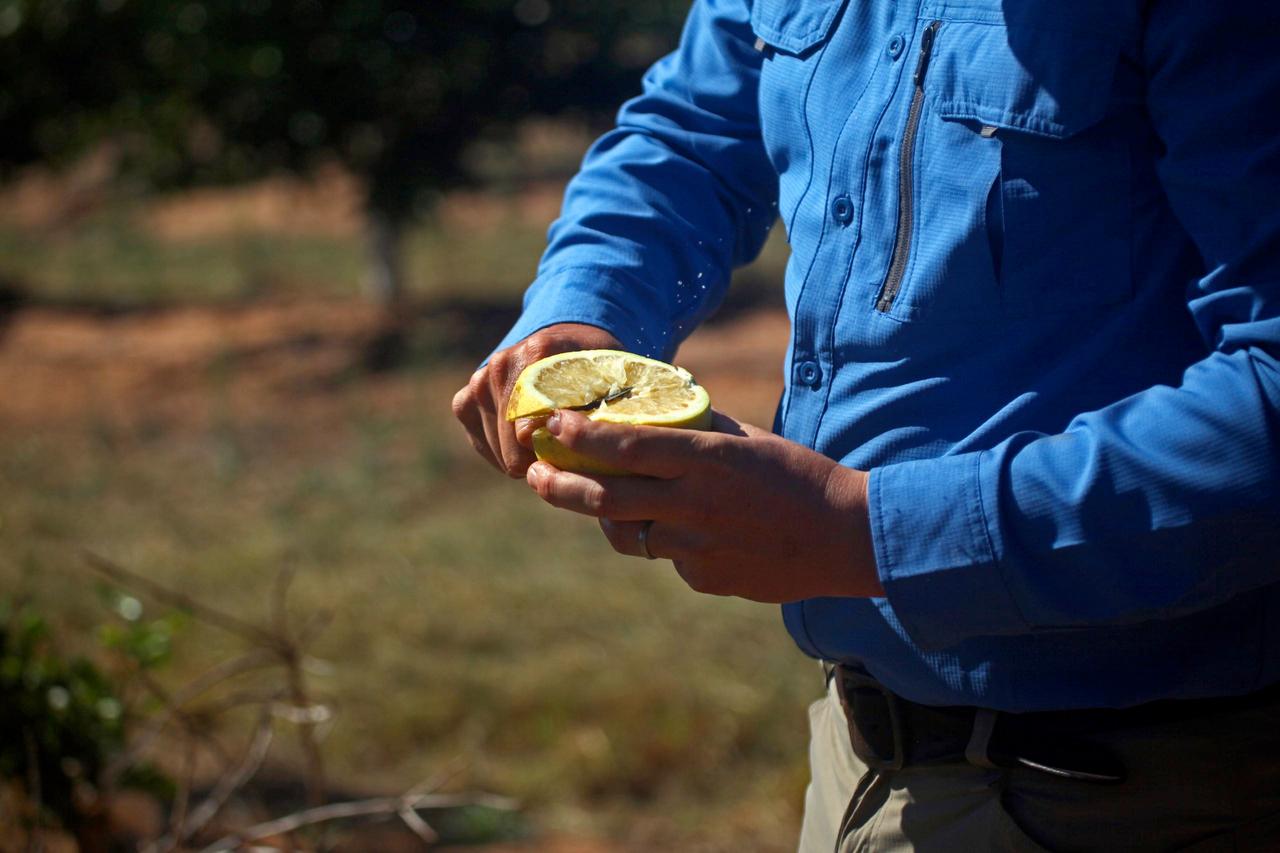
Janus moved to Australia with his family four years ago. “I came from the Western Cape region of South Africa where I managed table and wine grape orchards. There we had cold winters and very dry summers, so coming to terms with the Dimbulah climate has been a learning curve. The country looks similar, however."
The hills right behind our orchard remind me very much of where I came from, just no leopards lurking in the rocky crags. We are very happy to have made the move to Australia, and love the place, the community and the future we have here.
It was great to meet Janus and Jacob and see what an amazing job they're doing, being part of the community with his family, building a business by understanding the conditions and improving the soil’s capacity. Now if we could just get him to support the right rugby team, and not the ‘boks...
Medianrainfallforthenext6months

The Bureau of Meteorology is tipping a 50% chance or above of exceeding our median rainfall from June to September you beauty! However, ours is a region of two seasons: The Wet and The Dry The Dry is exactly that, and we get very little rainfall from May to October. In most areas, the monthly median is zero. As such, we have a high chance of getting something more than zero a heavy dew?
The BoM has us on El Niño Watch sea surface temperatures in the Pacific are quite high, an indicator of this climate driver for our region. El Niño years are typically drier and warmer, which could impact business decisions for spring and summer

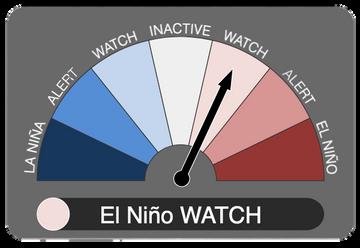
Hottertemperatures
The forecast for June–August shows a 45–80% chance of above median temperatures in our region It's time to start preparing for the coming fire season, as we're already at a moderate level of grass fire risk.
Getthelatestinfo

Want to stay up to date with weather and climate forecasts? Sign up for updates from the Northern Australia Climate Program and you'll get a monthly climate information calendar delivered straight to your inbox!
Gulf Savannah NRM is proud to be collaborating on this project with the University of Southern Queensland, the Bureau of Meteorology, the UK Met Office, state governments in QLD, NT and WA, and other NRM groups









